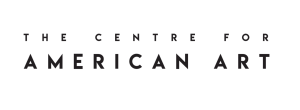I was in Clerkenwell recently, when the painter Megan Rooney shared with me the introduction to a poetry collection in which the writer, a poet, castigated most people for fancying a guaranteed birthproof safetysuit of nondestructible selflessness. We agreed that her paintings take up arms against such an idea, however reassuringly inviolable it may seem. Vulnerable, and susceptible to being transformed, or to being erased, and to no longer continuing as they are, Megan’s paintings record the iterations of loss in an often terrifying and exhilarating world. On the one hand, Rooney sets bounds on the size and scale of her paintings–each one is made on a uniform canvas measuring 200 x 150 cm, or about the wingspan of the average woman. Together these paintings form part of a ‘family’, as she categorises them, weighed down by the histories and squabbles and bonds that bind real families. And yet these canvases seem to ceaselessly resist being hemmed in; they unfold on their own terms like the world exists on its own terms, and they make demands on us to know about them as much as possible, to better live in and navigate that world. More than anything else, they remind us that it is important to live with voids, with absences. Many of Rooney’s paintings resemble to me sedimented vistas, like barely perceptible vegetal ecosystems recalled from memory. Abstract forms are often sanded with a real big drywall sander and scratched back to create a sense of time and space existing (or having existed once, and maybe once again) simultaneously, like the schoolgirl’s perceptibly erased sentence on ruled paper. Or what happens to the concrete outside your window when you realise it has been raining only when it stops; rivulets forming, puddles secreting. Think of a child on the street on the morning after a riot. Some kind of powerful violence enraptured the night, but we cannot know what it was. The broken glass needs to be swept up and the world needs to be made sense of. Imagine the child lost in unsentimental wonder, as we are in front of these paintings.
On the occasion of Megan Rooney’s major solo exhibition at Thaddaeus Ropac in Paris, this wide-ranging conversation will examine the tensions and possibilities of abstract painting practice, the relationship between art and poetry, and the ways in which mark-making can help make sense of our world in which we often tread so lightly.
Megan Rooney grew up between South Africa, Brazil and Canada, completing her BA at the University of Toronto followed by an MA in Fine Arts at Goldsmiths College, London in 2011. Her work has recently been shown in solo museum exhibitions, including at the Salzburger Kunstverein, Salzburg (2020–21); Museum of Contemporary Art, Toronto (2020); and Kunsthalle Düsseldorf (2019). Her performance EVERYWHERE BEEN THERE, created in collaboration with choreographer Temitope Ajose-Cutting and musician Paolo Thorsen-Nagel, premiered at the Kunsthalle Düsseldorf in 2019. The year prior, she performed SUN DOWN MOON UP as part of the Serpentine Galleries’ Park Nights programme in London. Rooney’s work has also been presented in numerous group exhibitions, including at the Fondation Louis Vuitton, Paris (2022); the Ludwig Forum für Internationale Kunst, Aachen (2021); Lyon Biennale (2019); Museum of Modern Art, Warsaw (2019 and 2017); Palais de Tokyo, Paris (2018); Venice Biennale (2017); David Roberts Art Foundation, London (2017 and 2014); and Fondation d’entreprise Galeries Lafayette, Paris (2014), among others.
Dr Matthew Holman is The Terra Foundation for American Art Postdoctoral Fellow at The Courtauld. Before that, he completed a PhD on global gestural abstraction at University College London, and stayed on to teach modern poetry. Matthew has held research fellowships at Yale University, The Smithsonian, The Paul Mellon Centre, and spent a year at The John F. Kennedy Institute for North American Studies in Berlin under a Leverhulme Trust Studentship. You can read his writing in The White Review, TLS, The Art Newspaper, Jacobin, Frieze, Apollo, and elsewhere. His first book, Curating Modern Life: Frank O’Hara and the Politics of Art, is out with Bloomsbury in 2024.
Organised by Dr Matthew Holman (The Courtauld)
The Centre for American Art is supported by the Terra Foundation for American Art
